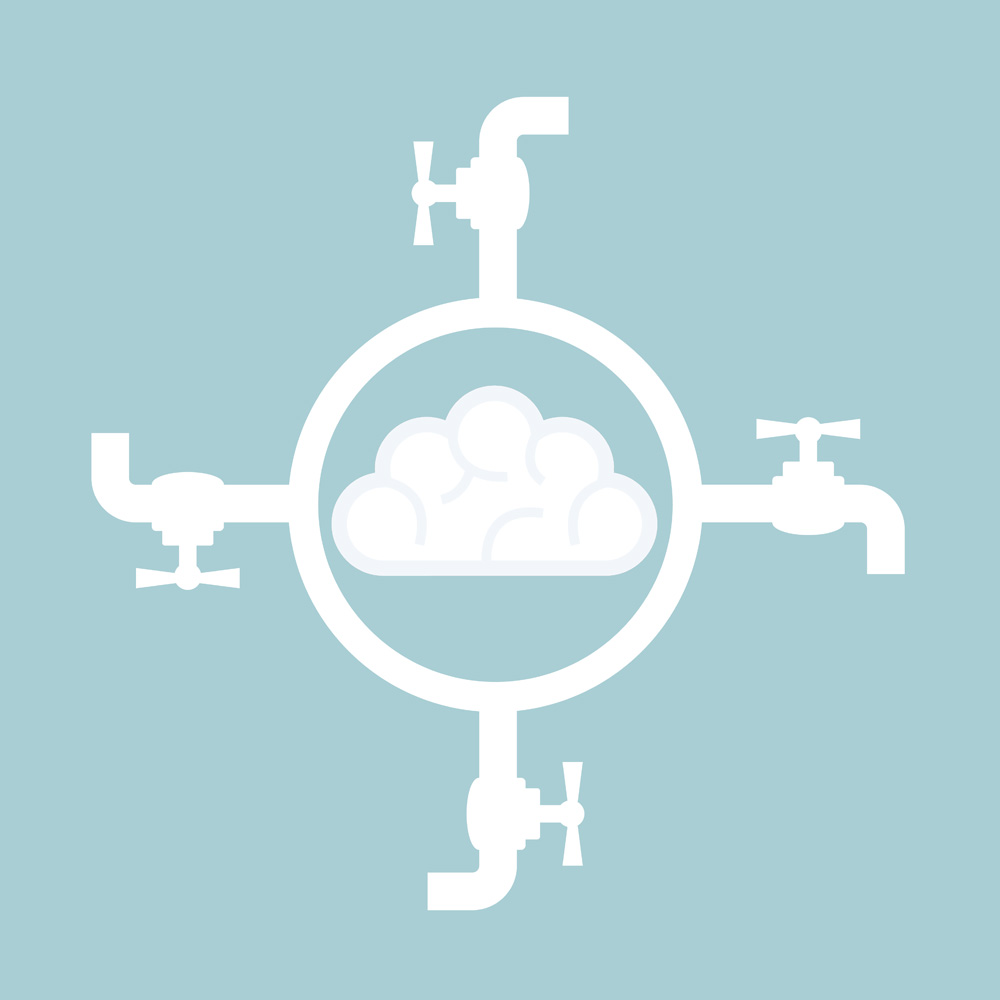Water, paradoxically abundant yet often out of reach, is present in oceans, mountain peaks, polar ice caps, and underground aquifers. While desalination by reverse osmosis is widely used to convert seawater, atmospheric water extraction holds immense potential. The Earth’s atmosphere contains the equivalent of 1.66 million Olympic swimming pools of water.
Although atmospheric water percentages are higher in tropical regions, there is still water even in desert areas. In other words, it’s practically everywhere. The question is: how can we efficiently and sustainably extract water from the air? This article explores the main technologies for doing so and some real-world applications.
Main technologies used to extract water from air
Several innovative methods can convert atmospheric moisture into drinkable water, many of which operate passively, without external energy sources. Here are six groundbreaking approaches:

- Dew point condensation: This technology cools the air until the water vapor condenses into liquid water. It uses cooling units and condensers to collect the water. It’s an effective solution in areas with high relative humidity.
- Desiccants: These systems use hygroscopic materials that absorb water vapor from the air. The water is then extracted by heating the desiccant and collecting the generated vapor.
- Passive condensation. It utilizes special hydrophilic surfaces to facilitate the condensation of water vapor without external energy, allowing for efficient and sustainable water collection.
- It harnesses solar energy to heat the air and direct the vapor into a chamber where it condenses and is collected. It’s an efficient solution for arid regions.
- Hydrophilic Nanomaterials: Nanoscale materials with high moisture absorption capacity. They capture water vapor even in low humidity conditions and release it through controlled heating.
- Fog nets. They use fine meshes to capture water droplets from fog. They are particularly useful in mountainous and coastal regions, providing a low-cost and low-tech solution.
From Diapers to Harps: Real-World Innovations in Water Extraction
The technologies mentioned above are far from being utopian solutions for extracting water from the air. Although they do not yet offer large-scale results, there are multiple projects worldwide addressing potable water scarcity. Here are some of the most striking examples.
Fog catchers in Chile
ACCIONA Energía has launched a pilot fog catcher project in the Punta Palmeras wind farm, located in the Coquimbo Region of Chile. This project uses high-density polyethylene meshes to capture water from the fog.
The fog catcher technology not only facilitates water collection for irrigating revegetated areas in this park but could also be used for cleaning solar panels in other complexes, further improving their efficiency and sustainability.
Fog harps
Similar to the Chilean project, a team of researchers at the Virginia Tech Institute for Creativity, Arts and Technology has developed a system inspired by sequoia needles to collect water from the air. They use ultrathin parallel strings like a harp. This biomimetic design triples the efficiency of conventional fog-catching systems and makes it easier to collect water in arid areas with a simple and inexpensive device.
MIT’s “diapers”
In their search for innovative solutions against drought, MIT discovered an unexpected technology: superabsorbent polymers used in baby diapers. These materials can absorb large amounts of water and, when properly adapted, can capture and retain moisture from the air. The idea is to use these polymers in devices that, by capturing atmospheric moisture, can then release potable water when heated.
Experiments show that when combined with high thermal conductivity materials, the polymers can release water more effectively when exposed to solar heat. This technology is promising not only for its low cost but also for its adaptability to different climatic environments. Moreover, researchers are exploring the possibility of integrating these absorbent materials into infrastructure, such as roofs and walls, to maximize atmospheric water collection in urban and rural areas.
Copper fins
Another research direction focuses on improving the efficiency of absorbent materials. A recent example is an innovative device created by MIT scientists that uses absorbent fins to collect potable water from the air. These fins, coated with zeolites—a microporous silicate—on a copper base, trap moisture from the air and release water when heated. In tests, the device has collected up to 1.3 liters of water daily in conditions of 30% relative humidity.
Beyond these outdoor technologies, advancements are also being made in domestic atmospheric moisture condensation systems, like this machine capable of producing up to fifteen liters of water daily.
Source:



